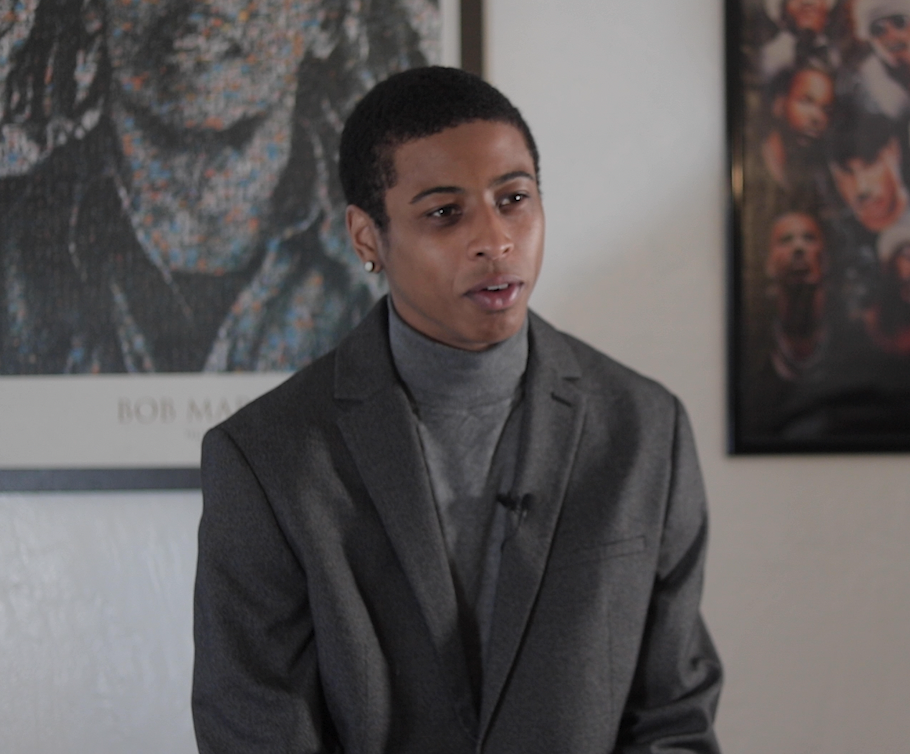Introduction
In the Documentary project, we were challenged to create a documentary that would accurately portray part of our community. This was a step outside of my comfort zone because I had to reach out to potential interviewees and use my connections to gather information. In this unit I made two documentaries: One for English, about the Haiti Action Committee (It ended up being about the current situation in Haiti) and one for Film, which was about the Trans community in the Bay Area. I learned many things such as how to use After Effects and how to conduct an interview. I didn’t expect to enjoy the Documentary unit because I thought it would be less creative, but I learned a lot and developed my skills.
Film Class Production
Mockumentary: The Students of Freestyle Academy
In film class, we learned the technical parts of making a documentary. For example, we learned how to draft interview questions, how to conduct yourself in an interview, and how to use lavalier microphones to capture sound. They ended up looking just like a professional interview. We practiced our skills by making a mockumentary. Our group was inspired by the Kardashians and we made a mockumentary about Freestyle Academy with all the drama of a reality TV show.
Gender Euphoria: Trans people in the Bay Area
For my actual Film documentary, I chose to focus on the trans community in the Bay Area. The current situation in this country is scary for a lot of trans people because of the increasing anti trans legislation that is forcing them to detranstition or denying them gender-affirming healthcare. With all the bad stuff happening now I wanted to portray the joy and community that trans people have. While that was my main focus I also portrayed some of the issues that trans people have locally. Overall it was a great way to get involved with the community and making this documentary allowed me to travel all over the Bay Area and meet other trans people.
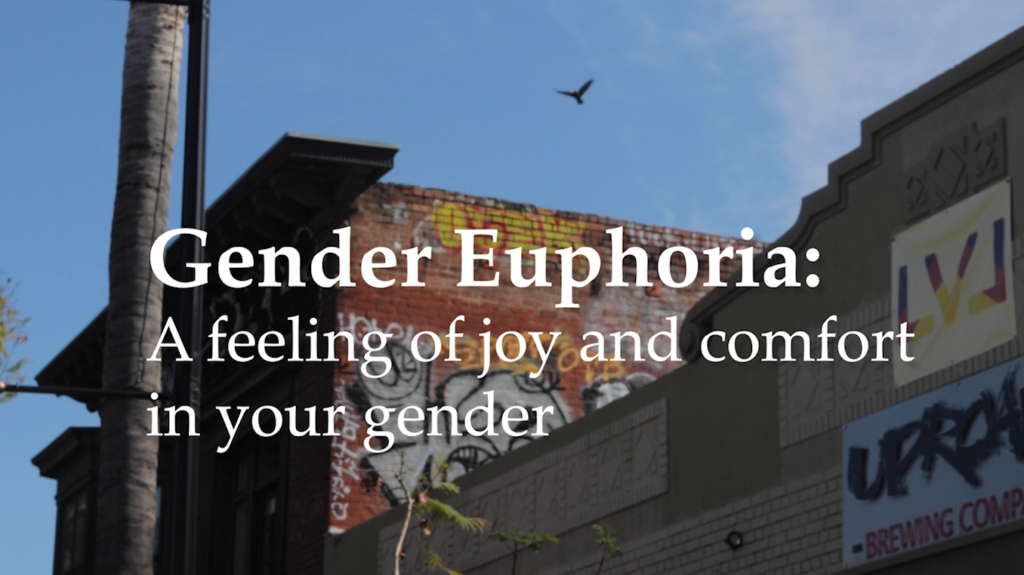
Click the images below to see some shots from the documentary. I went to Oakland, San Francisco, San Jose, and locally in the peninsula to get interviews and b-roll and attended a lot of pride events.
Interviewee’s bios and interview transcripts
Click on each image below to see the people I interviewed as well as the interview transcripts so you can read everything we talked about!
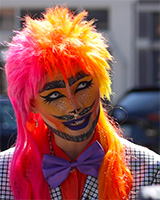
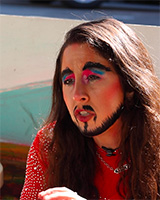


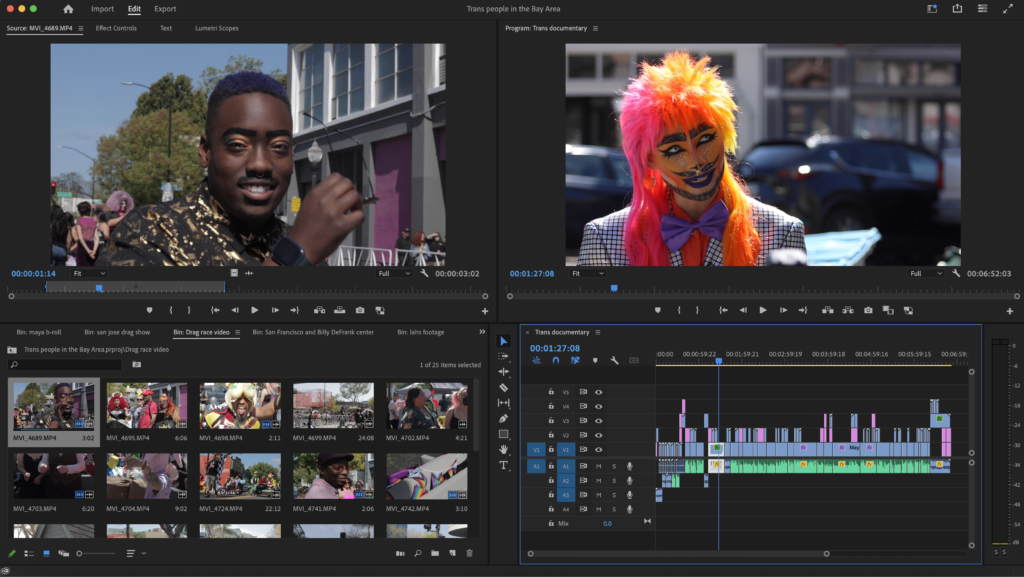
English Documentary
Haiti: The Heartbeat of Black Liberation
I decided to do my English documentary on the current situation in Haiti and how it connects to liberation movements all around the world. I decided to do this because I think it’s something that everyone should know about. I’m interested in this topic because I joined the Haiti Solidarity club at my school in sophomore year, and I became interested in Haiti’s history and present. That led me to become more involved in activism locally in the Bay Area. I hope this documentary inspires someone to research more about Haiti and learn its story.
This documentary was incorporated in both English and Digital Media classes. For English I was challenged to research my topic and write an essay about it. Then, we would include the essay in a magazine article that we would design in Digital Media. I had to edit down my paper so it would fit in an article setting. In this unit I did a lot of research and learned a lot more about Haiti’s history and current situation. I also learned how to use InDesign, which I used to design the article, and After Effects which I used to create the Intro Vid that is posted at the top of this webpage.
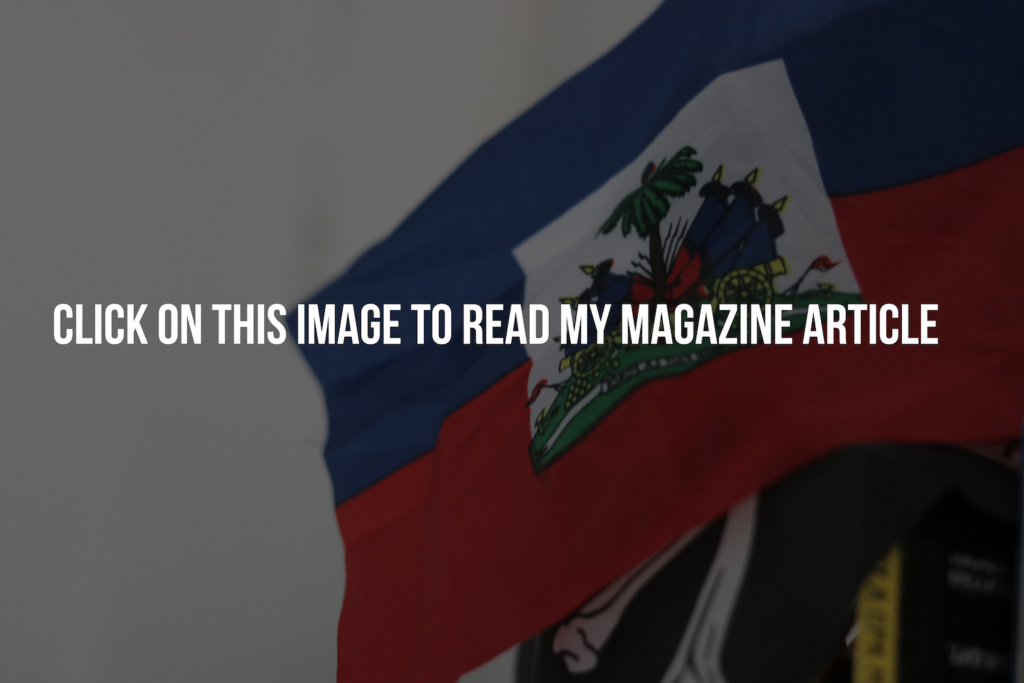
Interviewee’s bios and transcripts
For this documentary research paper, I interviewed two people involved in the Haiti Action Committee as research and I used their quotes in the article and paper. Click the images below to read more about them and see what we talked about during our interviews.
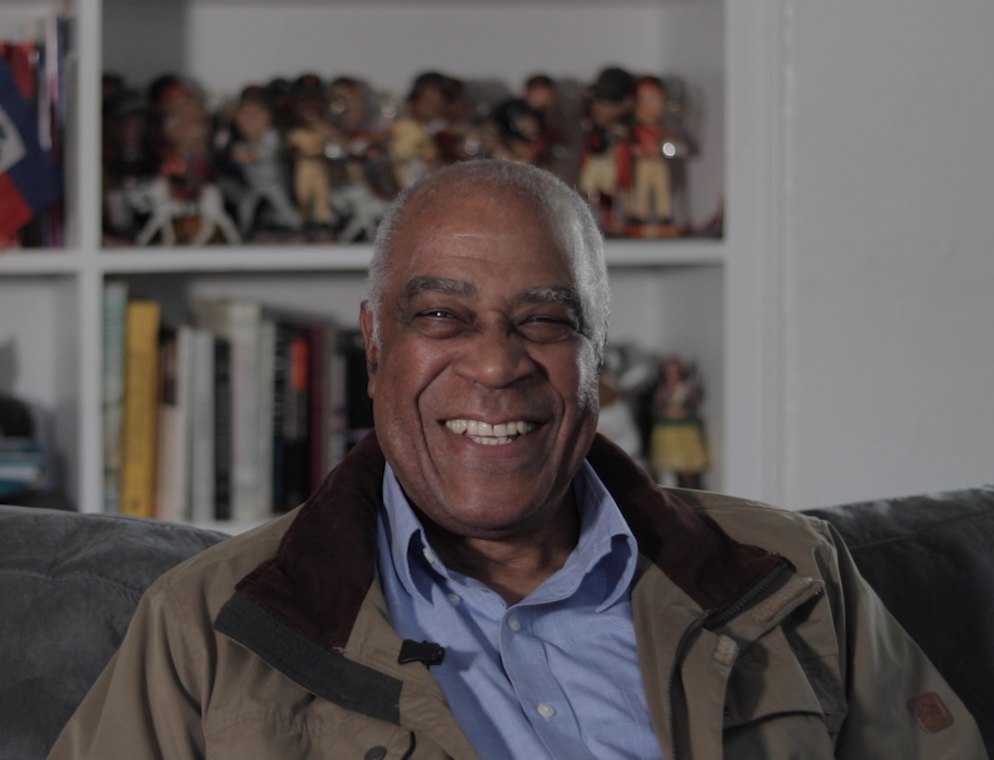

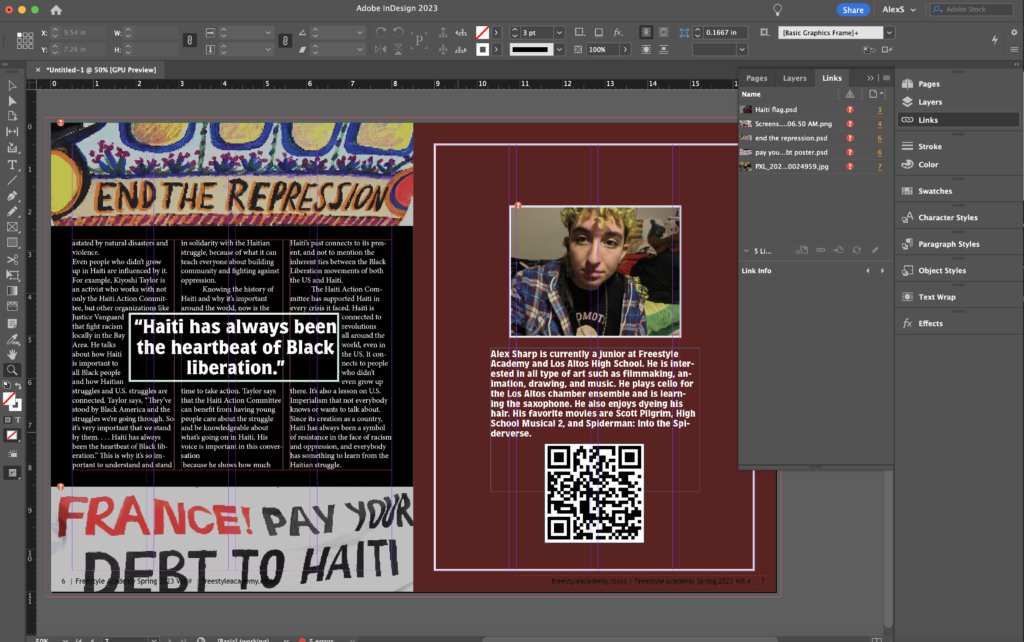
Conclusion
Reflection
This was the hardest project so far this year, but I’m proud of how all my projects turned out. I learned how to use a lot of new software that made everything even more professional. I tried out different types of media such as creating a magazine article. Studying documentaries in film gave me more of an appreciation for all the things that go into making a documentary. I’m also proud of going outside my comfort zone and contacting people I barely knew to get interviews. In the end it paid off because I got a variety of unique perspectives on my documentaries.
Overall it was a lot of work but I think the work paid off. Since documentaries are a way to show off your technical skills, they are valued when applying to colleges and jobs. It’s a valuable skill to learn how to make a film documentary and it gave me a sense of what I might do when going into a career.
Acknowledgments
I’m extremely grateful to everyone who allowed me to interview them. I’m grateful that I got the opportunity to learn more about Haiti as well as get more into the local trans community. Thank you to Pierre Labossiere for in-depth education on Haiti’s history and everyone involved in the Haiti Action Committee. Thank you to the drag kings in Oakland for introducing me to my first drag show. Thank you to my teachers Mr. Taylor and Mr. Greco for giving me feedback on my projects. Thank you to Silicon Valley Pride for creating a queer and trans space that’s more accessible for me in San Jose. Thank you to my parents for driving me to San Francisco and Oakland. Thank you to my trans friends here in Los Altos. Thank you to anyone I didn’t mention.











